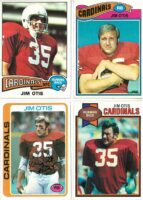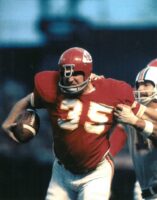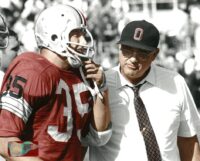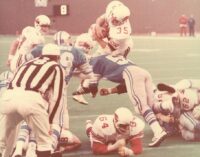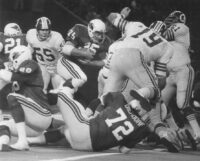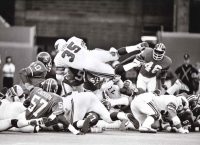Inductees
Jim Otis
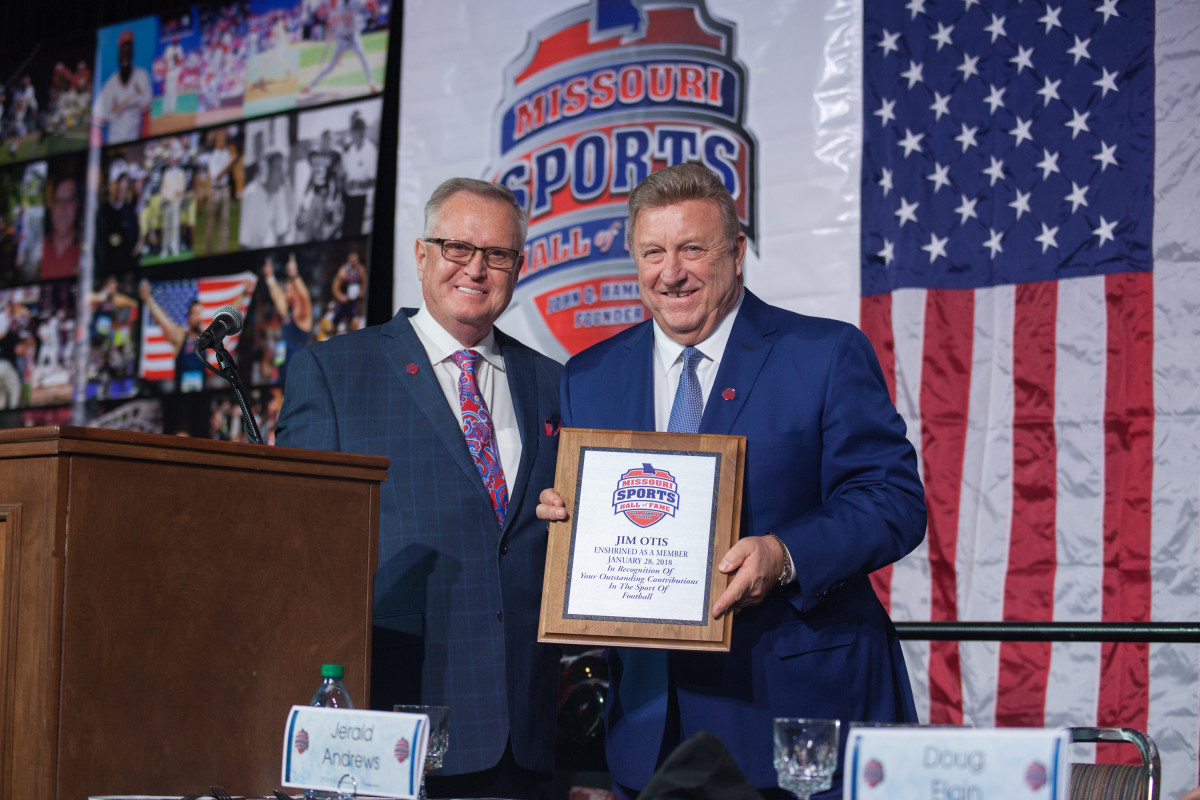
Born: April 29, 1948
It’s almost as if a Hollywood script writer delivered it right to Frank Capra himself. How else to explain the career of Jim Otis?
There he was at age 7 in a photo beside 1955 Heisman Trophy winner Howard “Hopalong” Cassidy of Ohio State. As a high school junior, with the headlights of teammates’ cars illuminating a fall evening to allow him to work on running the ball after a regular practice, he transformed from lineman to fullback. And then in 1968, wearing the silver helmet and a blood-stained scarlet jersey, led Ohio State to the national championship.
It’s no wonder, then, that the St. Louis Football Cardinals wanted him, and his success there is why the Missouri Sports Hall of Fame proudly inducted Otis with the Class of 2018.
“I’m glad I had the opportunity to play with that group,” Otis said of the Cardinals. “That would have been a tremendous hole in my life if I hadn’t played in St. Louis.”
Otis played nine seasons in the National Football League, with his final six in St. Louis.
There, he rushed for 3,863 of his 4,350 NFL yards, breaking the Cardinals’ all-time rushing record. He also helped St. Louis to 10-, 11- and 10-win seasons from 1974 to 1976 under coach Don Coryell, with the 1974 and 1975 teams reaching the playoffs.
In fact, the 1975 season saw Otis earn a Pro Bowl selection after career bests in rushing yards (1,076) and carries (269), with his yardage leading the NFC.
He’ll never forget the offensive linemen: Dan Dierdorf, Roger Finnie, Conrad Dobler, Tom Banks, Bob Young and Jackie Smith. In a 20-17 overtime win against Washington, Otis’ eight consecutive carries set up the winning field goal.
“Their character made them who they were,” Otis said. “When it was time to run for a first down, they all wanted me to run over them as they knew they could escort me to the first down.”
All of which followed an inaugural season in St. Louis in which Otis, convinced he was under-used, met with assistant coach Jim Hanifan.
“I diagrammed the off-tackle play 10 different ways,” Otis said. “I said, Coach, if I can get in there and play, I can help this team. He said, ‘I know you can.’”
Otis’ passion was understandable. He played for the Kansas City Chiefs in 1971 and 1972 but as a back-up. More so, he was born a football player, as folks in his Ohio hometown of Celina will tell you.
After all, Otis emerged as a bruiser of a fullback only by happenstance.
“I was one of the biggest kids on the team. I weighed 190 and the coach said, ‘You’ve got to play on the offensive line,’” Otis said.
But one night, in front of car headlights, quarterback Dick Quilling asked Otis to play fullback.
Weeks later, after the team’s first- and second-string fullbacks were unavailable, Otis got his break. Ultimately, he earned a scholarship to Ohio State.
Otis led coach Woody Hayes’ Buckeyes to a 24-4 record from 1967 to 1969, including two Big Ten titles and a memorable national championship 1968 season that ended with a Rose Bowl victory against Southern Cal and a 10-0 record. Otis scored four TDs against Michigan that season. In 1969, Otis earned consensus First Team All-American and All-Big Ten Conference honors.
In all three years, he led the team in rushing, and finished with 2,542 career yards rushing. That was the best in program history upon graduation and was No. 2 for years behind two-time Heisman winner Archie Griffin. Overall, Otis averaged 97.7 yards a game, never had a rushing attempt that resulted in a lost yard and broke all of Cassady’s records.
“When I was a sophomore, I fumbled against Illinois twice in the first half, and Coach was really mad,” Otis said. “He said, ‘You’re never going to play here again.’ I thought my career was over.”
Fortunately, a second chance awaited.
Eventually, he reached St. Louis thanks in part to Hank Stram, who traded for Otis after Kansas City’s 1970 Super Bowl victory. He had played his first year with the NFL’s New Orleans Saints.
However, the Chiefs placed Otis on injured waivers in September 1973, and in swooped St. Louis. Later that year, he asked Hanifan for more playing time.
“What I needed was somebody to carry the banner a little bit,” Otis said. “I needed a chance to play, and that’s what I got in St. Louis.”
